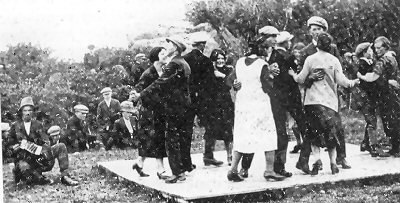I was telling you about the Blackfoot, a sort of matchmaker of times gone by.
It was in the early nineteenth century that he was at his height. Then, it was few enough couples that married for love: economic factors dominated; what land the prospective groom owned or the size of the bride-to-be’s dowry.
The latter was also judged on her capabilities. When the man would come calling at her house, he would be watching to see how well she could spin or sew. His keen eye would detect a shiny, polished patch on the rump of her dress, indicated too long spent in the seated position!
Or chilblains – a sure sign that the girl spent too much time warming her legs at the fireside!
She had little recourse to testing him, except for reports from friendly neighbours who might warn of his excesses.
It mattered little. The final arbiters were the parents. The arrangement could be seen as a deal involving the exchange of labour, land and animals. There were too many parents willing to marry their daughters off to old bachelors with money.
The solution – for those in love – was to run away.
This too had its hidden snares – a story to be told next!
